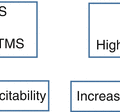Organization
Definition
Diagnostic criteria to identify muscle mass loss
Diagnostic criteria to characterize functional status
Sarcopenia Working Group of the European Union Geriatric Medicine Society
“Sarcopenia is a syndrome characterized by progressive and generalized loss of skeletal muscle mass and strength with a risk of adverse outcomes such as physical disability poor quality of life and death”
MM measured by CT, MRI, DXA, BIA, or total body potassium counting using appropriate cut points [4]
Poor hand grip strength, knee flection/extension, or peak expiratory flow
Low physical performance identified by the impaired short physical performance battery or gait speed or TUG or stair climb power test
European Society of Parenteral and Enteral Nutrition Clinician Nutrition and Metabolism Special Interest Group
“Sarcopenia is a condition characterized by loss of muscle mass and muscle strength”
% of MM measured via BIA, at least 2 SDs below mean for sex- and race-matched adults aged 18–39 years
Low physical performance defined as gait speed <0.8 m/s during a 4-min walking test
International Working Group on Sarcopenia
“Sarcopenia is the age-associated loss of skeletal muscle mass and function”
Low appendicular MM corrected for height defined as ≤7.23 kg/m2 in men and ≤5.67 kg/m2 in women, measured via DXA
Low physical performance defined as gait speed <1 m/s during a 4-m walking test
Society of Sarcopenia Cachexia and Wasting Disorders
“Sarcopenia with limited mobility”
Low appendicular MM corrected for height defined as at least 2 SDs below mean for sex- and race-matched adults aged 20–30 years
Low physical performance defined as gait speed <1 m/s or walking distance <400 m during a 6-min walk
4.3 The Pathophysiology of Sarcopenia
The skeletal and the muscular systems are tightly intertwined, and bone fragility is known to depend on several pathogenetic mechanisms leading to bone mass loss and reduction of bone strength, a condition widely known as osteoporosis. Interestingly, the degenerative processes leading to osteoporosis and sarcopenia show many common pathogenic pathways. Aging skeletal muscle tissue undergoes some important structural and functional modifications regarding mass, viscoelastic properties, fiber-type expression, and innervation. All these modifications lead to the pathogenesis of the sarcopenic state, which is complex and multifactorial. Alongside with external factors such as nutritional status and lower mobility, there are internal factors such as endocrine function, variation in the rate of apoptosis, micro-injuries, variability in recovery, and mitochondrial dysfunction sustaining the development of sarcopenia [2, 3].
The main mechanisms underlying sarcopenia are resumed as follows:
Muscle cross sectional area (CSA) reduction: loss of both slow and fast motor units, with an accelerated loss of fast motor units.
Myosteatosis
Muscle denervation due to age-related neurodegenerative processes, in particular reduction of spinal alpha motor neurons, peripheral nerve fibers and alterations of their myelin sheaths, neuromuscular junctions, and synaptic vesicles.
Increased protein degradation/decreased protein synthesis. Inflammatory cytokines (IL-6 and TNF-alpha) and endocrine factors (GH and IGF-I) are strictly involved in this process.
Increased oxidative damage altering and damaging cell components, particularly mitochondria and DNA sequences.
Reduced tissue regeneration due to myogenic regulatory factors (MRF) negatively influencing satellite cells activity [3].
4.4 Sarcopenia Assessment
In order to evaluate and define sarcopenia, skeletal muscle mass and its function should be objectively quantified. The two measurable variables are skeletal muscle mass and strength; however the challenge is to determine how best to measure them in an accurate and consistent way. Below, the main techniques to assess muscle mass and strength will be briefly described. Cost, availability, and ease of use can determine whether the techniques are better suited to clinical practice or for research purposes [4].
4.4.1 Muscle Mass
Computed tomography (CT) and magnetic resonance imaging (MRI). They are considered the gold standards for estimating muscle mass in research because of their precision in discriminating fat and other soft tissues. However, because of the high cost and limited access, their use is highly limited in routine clinical practice.
Dual energy X-ray absorptiometry (DXA). DXA is a whole-body scan, mainly used for bone mineral density evaluation but able to assess also lean muscle mass. DXA exposes the patient to minimal radiation and is the preferred alternative method to CT and MRI for research and clinical use.
Bioimpedance analysis (BIA). BIA estimates the volume of fat and lean body mass. BIA is inexpensive, easy to use, readily reproducible, and appropriate for both ambulatory and bedridden patients. Moreover BIA results have a good correlation with MRI; thus, BIA might be a good portable alternative to DXA and CT and MRI.
Anthropometric measures. They are used mainly in ambulatory setting, calculating mid-upper arm circumference and skinfold thickness, to assess muscle mass. However they are not recommended for sarcopenia diagnosis because of their low reproducibility [4].
4.4.2 Muscle Strength
Handgrip strength. It has a stronger predictive power on outcomes, disability, and ADL than muscle mass evaluation, being strongly related to lower limb muscle power and calf CSA. Thus, it is a good simple measure of muscle strength being recommended for both research and clinical purposes.
Stay updated, free articles. Join our Telegram channel

Full access? Get Clinical Tree




